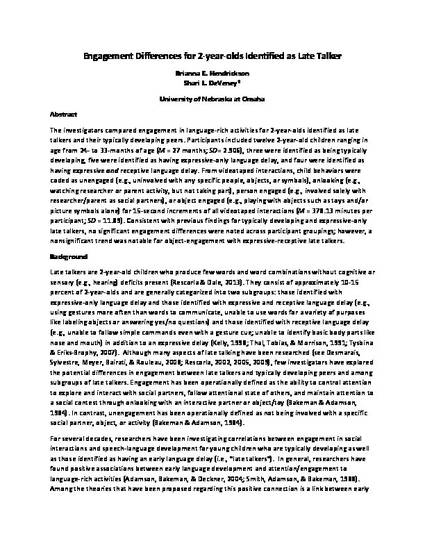
The investigators compared engagement in language-rich activities for 2-year-olds identified as late talkers and their typically developing peers. Participants included twelve 2-year-old children ranging in age from 24- to 33-months of age (M = 27 months; SD= 2.906), three were identified as being typically developing, five were identified as having expressive-only language delay, and four were identified as having expressive and receptive language delay. From videotaped interactions, child behaviors were coded as unengaged (e.g., uninvolved with any specific people, objects, or symbols), onlooking (e.g., watching researcher or parent activity, but not taking part), person engaged (e.g., involved solely with researcher/parent as social partners), or object engaged (e.g., playing with objects such as toys and/or picture symbols alone) for 15-second increments of all videotaped interactions (M = 378.13 minutes per participant; SD = 11.89). Consistent with previous findings for typically developing and expressive-only late talkers, no significant engagement differences were noted across participant groupings; however, a nonsignificant trend was notable for object-engagement with expressive-receptive late talkers.
Available at: http://works.bepress.com/shari-deveney/7/

The original published version of this article can be found here: http://www.kon.org/urc/v13/hendrickson.html.